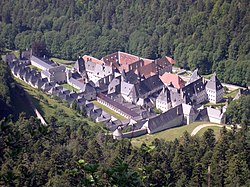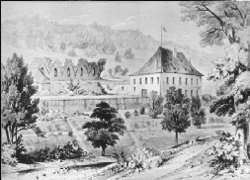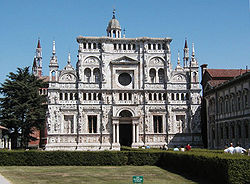This is a list of Carthusian monasteries, or charterhouses, containing both extant and dissolved monasteries of the Carthusians (also known as the Order of Saint Bruno) for monks and nuns, arranged by location under their present countries. Also listed are ancillary establishments (distilleries, printing houses) and the "houses of refuge" used by the communities expelled from France in the early 20th century.
Contents
- Europe
- Austria
- Belarus
- Belgium
- Czech Republic
- Denmark
- France
- Germany
- Hungary
- Ireland
- Italy
- Netherlands
- Poland
- Portugal
- Romania
- Slovakia
- Slovenia
- Spain
- Sweden
- Switzerland
- United Kingdom
- Americas and Asia
- Argentina
- Brazil
- South Korea
- United States
- Charterhouses for women
- Belgium 2
- France 2
- Italy 2
- Republic of Korea
- Spain 2
- See also
- References
- Further reading
- External links
Since the establishment of the Carthusians in 1084 there have been more than 280 monastic foundations and several more unsuccessfully attempted ones, [1] and this list aims to be complete. Dates of foundation and suppression are given where known. As of August 2025 [update] there are 21 extant charterhouses, 16 for monks and 5 for nuns, indicated by bold type. [2] [3]



















